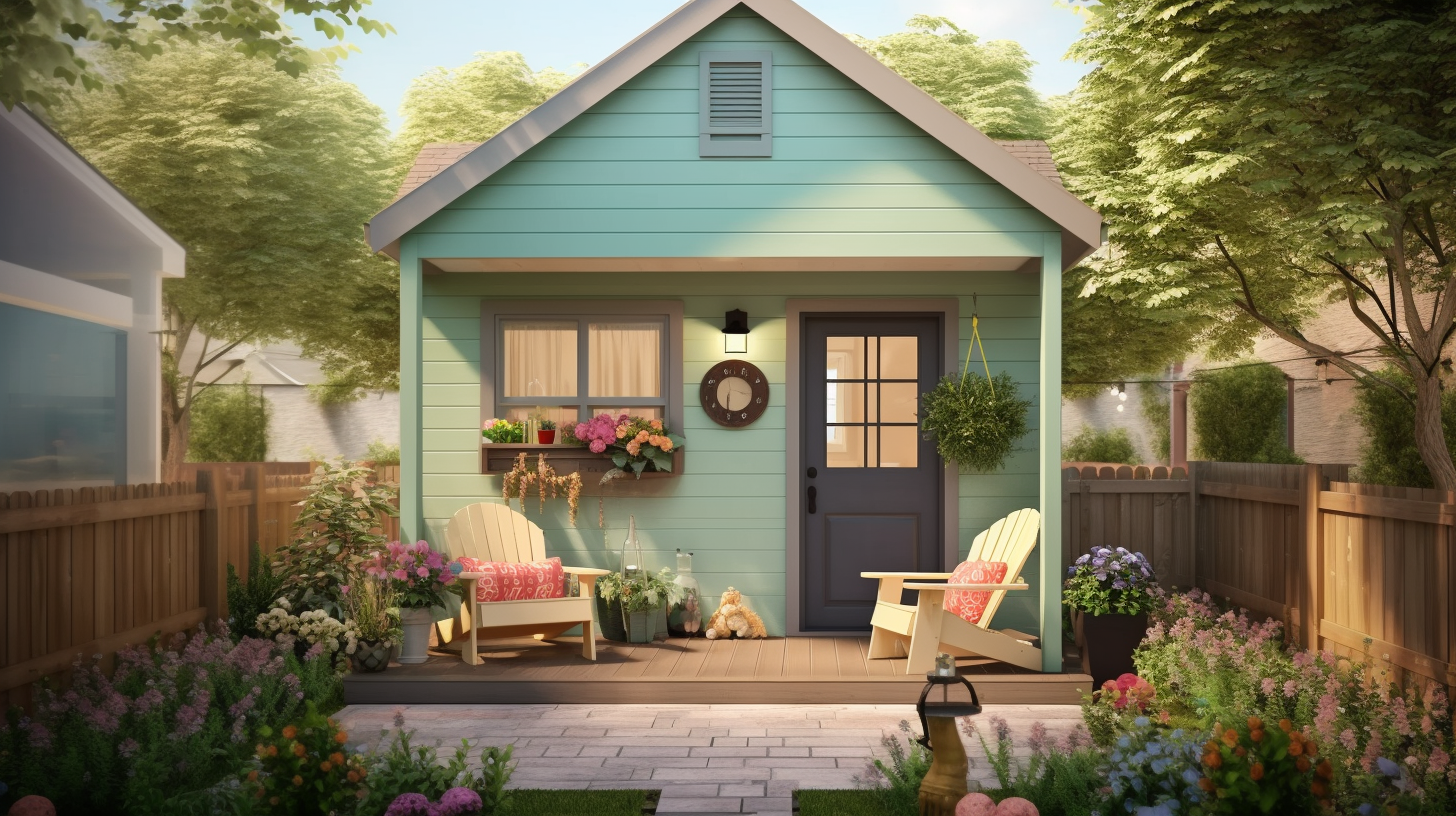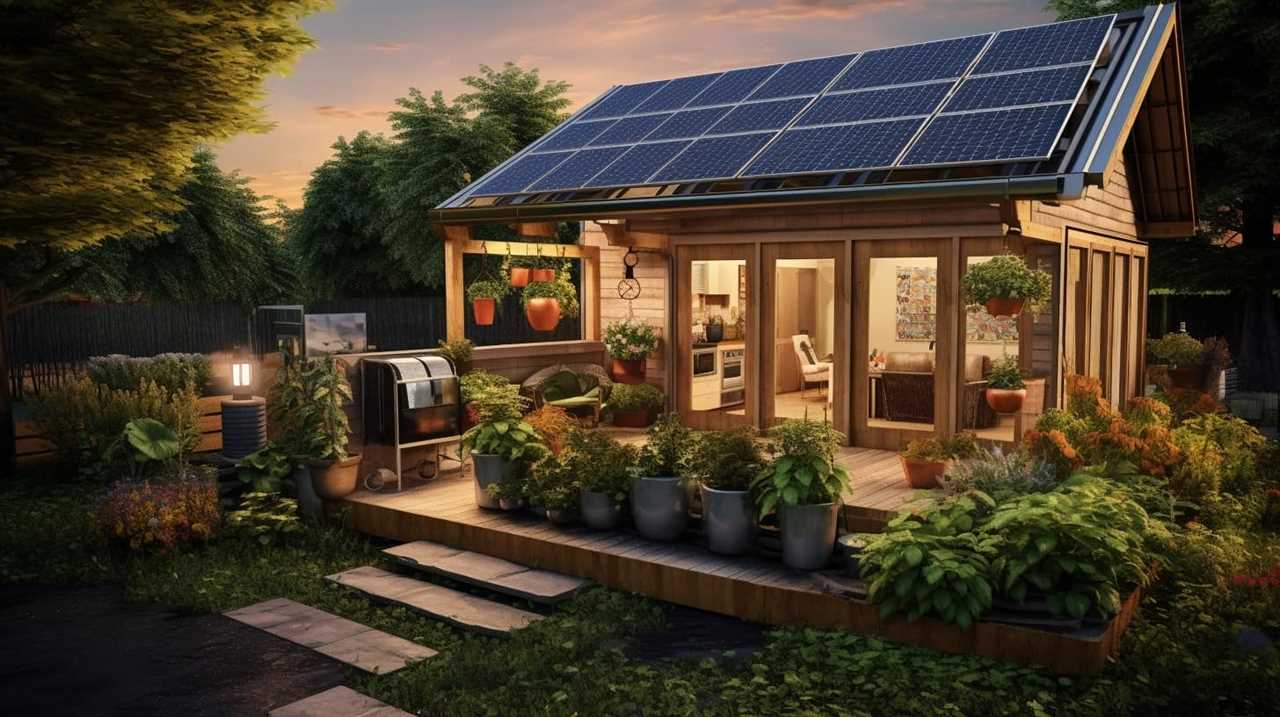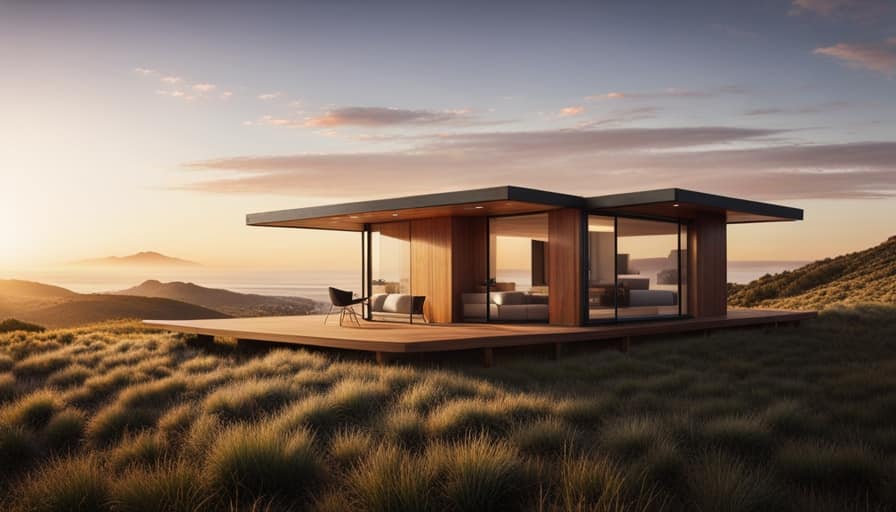With the rising cost of housing, many individuals and families are looking into alternative living arrangements to save money and live a more sustainable lifestyle. One popular option is tiny house living, which offers a minimalist way of life in a compact and cozy space.
For one couple in Oregon, tiny house living has been the perfect solution for their budget and lifestyle needs. By living in side-by-side tiny houses, Elisa and Ryk have been able to customize their living spaces to suit their individual preferences while still enjoying a shared sense of community and companionship.
Elisa and Ryk’s tiny houses are a testament to the benefits of downsizing and living in a smaller space. Despite the compact size of their homes, they have been able to create distinct layouts and looks that reflect their personal styles and interests. Elisa’s tiny house has a witchy vibe, while Ryk’s serves as a meditative man cave.
Despite these differences, they still cook meals and eat together, and enjoy a shared yard with different spaces to hang out. By living in tiny houses, they have been able to save $600 per month compared to their previous apartment rental, demonstrating the financial benefits of this lifestyle choice.
In the following article, we will explore how Elisa and Ryk have been able to live comfortably and happily in their tiny homes while also saving money.
Key Takeaways
- Living in side by side tiny houses can result in significant cost savings compared to renting an apartment.
- Each tiny house can be customized to individual preferences and tastes, with different layouts, looks, and feels.
- Couples can have separate spaces for their own interests and tastes, while still enjoying shared meals and activities.
- Living in an RV/THOW community can provide a great environment and opportunities for private retreats.
Customized Living Spaces
The customized living spaces in the side by side tiny houses of Elisa and Ryk are a testament to the versatility and ingenuity of tiny house living. They were able to maximize space by designing their homes to fit their individual needs and tastes.
Elisa’s tiny house has an open living room area with reclaimed wood high ceilings, secondary loft for creative endeavors, and bedroom loft with queen-sized bed and built-in closet. Meanwhile, Ryk’s tiny house has a low-height platform bed for storage underneath, and a home office with large shelves to showcase artwork.
The couple’s side by side tiny houses have distinct layouts and looks that allow them to express themselves differently while still enjoying shared spaces and activities. They have separate spaces for their individual tastes, but still cook meals and eat together.
Elisa’s tiny house has a witchy vibe, with a secondary loft that serves as her creative sanctuary. Ryk’s tiny house, on the other hand, is a meditative man cave with a comfortable and functional home office.
Despite the differences in their tiny houses, the couple was still able to come together and create shared spaces where they can bond and relax, such as their shared yard with different spaces to hang out.
Distinct Layouts and Looks
With unique layouts and personalized designs, the two tiny houses owned by the couple in Oregon showcase how customization can make a space feel both functional and stylish. The trend of tiny house design has been on the rise, with more people seeking to live minimally and sustainably. Personalization and functionality in small spaces are key factors to consider when designing a tiny home, and Elisa and Ryk’s tiny houses demonstrate this perfectly.
Elisa’s tiny house features reclaimed wood high ceilings, a secondary loft for creative endeavors, and a bedroom loft with a built-in closet. Ryk’s tiny house has a low-height platform bed for storage underneath and a functional home office with large shelves to showcase artwork. Despite their different layouts and designs, both tiny houses share a common trait – they are both uniquely designed to fit the couple’s individual preferences.
The couple’s side by side tiny houses highlight how personalization and functionality can coexist in small spaces to create a comfortable and stylish living environment.
In conclusion, the couple’s side by side tiny houses showcase how customization and personalization can make a small space feel both functional and stylish. As tiny house design trends continue to evolve, it is important to consider the balance between personalization and functionality in small spaces. Overall, Elisa and Ryk’s tiny houses demonstrate how it is possible to create a unique and comfortable living space that reflects individual preferences and needs.
Shared Community and Companionship
Shared community and companionship are important aspects of living in a tiny house, as research shows that tiny house communities can foster a sense of belonging and social support. According to a survey, 78% of tiny house owners reported a stronger sense of community after downsizing to a tiny home. This is particularly true for those who live in RV/THOW (Recreational Vehicle/Tiny House on Wheels) communities, where residents share common spaces and amenities such as laundry facilities, gardens, and outdoor areas.
Living in a shared community requires some adjustment and compromise, especially when it comes to navigating shared living spaces. In a tiny house, it is essential to respect each other’s privacy and personal space, while also finding ways to share common areas and tasks.
Elisa and Ryk’s side by side tiny houses are a great example of how a couple can live together while still having their own individual spaces. By having separate homes, they can have their private retreats when desired, but also come together to enjoy shared activities and socializing.
Overall, living in a tiny house community can provide many benefits, including a sense of belonging, support, and connection with like-minded people.
Frequently Asked Questions
How did Elisa and Ryk decide on the location for their side by side tiny houses?
Elisa and Ryk chose the location for their side by side tiny houses based on a number of factors, including accessibility to amenities and cost-effectiveness.
They found an RV/THOW community in Welches, Oregon that provided them with a great environment and access to shared utilities such as water and electricity, which helped to reduce their living expenses.
They also appreciated the privacy and independence that this location afforded them, while still allowing them to come together and enjoy shared activities.
Overall, the couple’s decision to choose a location that met their practical needs and personal preferences has contributed to their enjoyment of living in their side by side tiny houses.
Did they face any challenges or difficulties during the building process with New Creation Tiny Homes?
While building their side by side tiny houses with New Creation Tiny Homes, Elisa and Ryk faced some challenges and difficulties. These may have included designing and customizing the tiny houses to meet their individual preferences while still ensuring that the two houses would fit seamlessly together.
Other potential difficulties could have included navigating the building process, including obtaining permits and ensuring that the tiny houses met local building codes. Despite these challenges, Elisa and Ryk were able to successfully build their tiny houses, which provided them with a comfortable and functional living space that allowed them to save money and enjoy their individual interests while still spending time together.
Overall, the building process may have been challenging, but the end result was well worth the effort.
How do they handle household tasks and chores, such as cleaning and maintenance?
Efficient organization and delegation of tasks are key factors in maintaining a tidy and functional living space in the side by side tiny houses of Elisa and Ryk. Without the context of their financial savings, it is evident that they have established a system where they share household tasks such as cleaning, maintenance, and cooking.
They have separate spaces for their individual tastes but still come together to enjoy meals and leisure activities. It can be inferred that they have established a routine that works for them, and have likely discussed and assigned specific tasks to each other to ensure that their living spaces remain clean and functional.
This efficient organization and delegation of tasks allows them to enjoy their private retreats while maintaining a comfortable and functional living space.
Have they had any issues with noise or privacy, living in such close proximity to each other?
Privacy concerns and noise reduction techniques are common issues faced by individuals living in close proximity to each other, particularly in tiny houses.
Elisa and Ryk, who live in side by side tiny houses, have not reported any privacy or noise issues. However, they have designed their tiny houses to meet their individual preferences and needs, which has helped to create separate spaces and minimize disturbances.
For instance, Elisa’s tiny house has a secondary loft for creative endeavors, while Ryk’s tiny house has a low-height platform bed for storage underneath. They also have separate spaces for their individual tastes but still cook meals and eat together.
Additionally, they have shared yard space with different areas to hang out, which allows them to have private retreats when desired.
Overall, while privacy and noise concerns may arise when living in such close proximity, Elisa and Ryk’s customized tiny houses have helped to minimize these issues.
What advice would they give to other couples considering a similar living arrangement?
According to a recent survey conducted by the National Association of Home Builders, 63% of millennials are interested in living in a tiny house.
For couples considering a similar living arrangement, it is important to establish clear communication and boundaries to manage personal space.
Tips for communication include regularly checking in with each other to discuss any issues or concerns, actively listening to each other’s needs, and compromising when necessary.
Additionally, having designated spaces for each person can help create a sense of privacy and independence within the shared living space.
It is also important to be open to adjusting and adapting to the unique challenges that come with living in a small space, and to prioritize spending time outside of the house to avoid feeling cooped up.
By prioritizing communication and personal space, couples can successfully navigate the joys and challenges of living in a side by side tiny house.
I’m Theodore, and I love tiny houses. In fact, I’m the author of Tiny House 43, a book about tiny houses that are also tree houses. I think they’re magical places where imaginations can run wild and adventures are just waiting to happen.
While tree houses are often associated with childhood, they can be the perfect adult retreat. They offer a cozy space to relax and unwind, surrounded by nature. And since they’re typically built on stilts or raised platforms, they offer stunning views that traditional homes simply can’t match.
If you’re looking for a unique and romantic getaway, a tree house tiny house might just be the perfect option.










